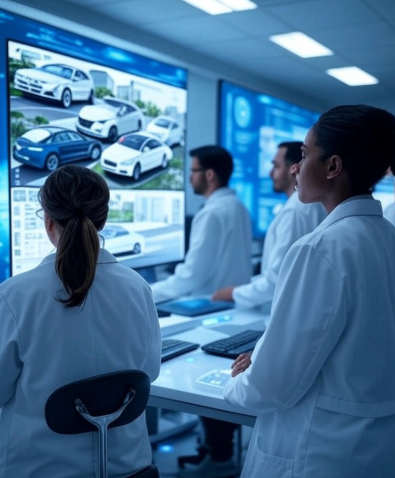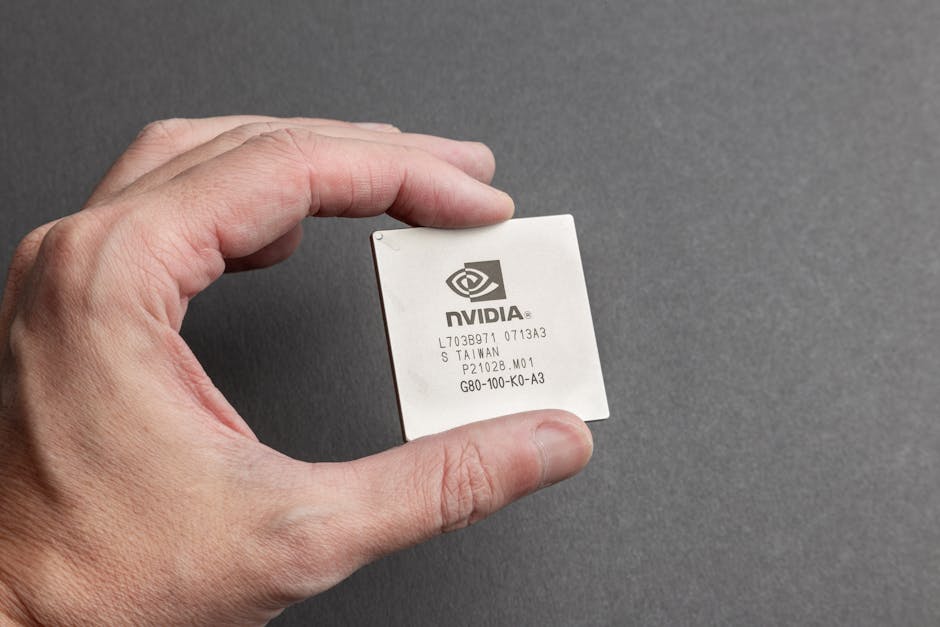As computer vision technologies continue to advance, their applications—ranging from autonomous driving to medical imaging—require increasingly accurate and robust models.These models depend heavily on high-quality training data, but collecting real-world data can be costly, time-consuming, and limited by privacy concerns.Synthetic data, generated artificially, has emerged as a powerful alternative, and photorealistic 3D simulations are revolutionizing its quality.On May 21, 2025, this topic remains highly relevant as industries leverage synthetic data to push the boundaries of computer vision.This blog explores how photorealistic 3D simulation enhances the quality of synthetic data for computer vision, delving into its mechanisms, benefits, challenges, and future potential.
The Rise of Synthetic Data in Computer Vision

Computer vision involves teaching machines to interpret and understand visual information, such as images or videos, much like humans do. Training these systems requires vast amounts of labeled data—images annotated with details like object boundaries, depth, or semantic labels. For example, an autonomous vehicle needs millions of images to recognize pedestrians, traffic signs, and road conditions in diverse scenarios. However, capturing and annotating real-world data is a significant bottleneck. Real-world datasets are often incomplete, biased, or restricted by privacy regulations like GDPR.
Synthetic data offers a solution by generating artificial datasets using computer-generated imagery (CGI) or simulations. These datasets can be tailored to specific needs, providing diverse, labeled data without the logistical challenges of real-world collection. According to a 2024 report by Gartner, 60% of the data used for AI training will be synthetic by 2026, up from less than 1% in 2021. Photorealistic 3D simulations, in particular, are driving this shift by producing data that closely mirrors real-world visuals, making it ideal for computer vision tasks.
What Are Photorealistic 3D Simulations?
Photorealistic 3D simulations involve creating virtual environments that look and behave like the real world, using advanced rendering techniques, physics engines, and AI-driven tools. Platforms like Unreal Engine, Unity, and NVIDIA’s Omniverse enable developers to build 3D scenes with realistic lighting, textures, shadows, and physics-based interactions. For computer vision, these simulations generate synthetic images or videos that can be paired with precise annotations—such as object labels, depth maps, or segmentation masks—automatically during the rendering process.
For example, a 3D simulation of a city street can include photorealistic cars, pedestrians, and weather conditions, all rendered with lifelike detail. The simulation can then output thousands of images from different angles, lighting conditions, and scenarios, each accompanied by perfect annotations, which would be prohibitively expensive to produce manually in the real world.
How Photorealistic 3D Simulations Enhance Synthetic Data Quality
Photorealistic 3D simulations elevate the quality of synthetic data for computer vision in several key ways:
- Bridging the Reality Gap
The primary challenge with synthetic data is the “reality gap”—the difference between synthetic and real-world data that can lead to poor model performance when applied to real scenarios. Photorealistic 3D simulations minimize this gap by producing visuals that are nearly indistinguishable from real-world images. Advanced rendering techniques, such as ray tracing, simulate how light interacts with surfaces, creating realistic shadows, reflections, and refractions. This ensures that computer vision models trained on synthetic data can generalize better to real-world environments.
For instance, in autonomous driving, companies like Waymo and Tesla use photorealistic simulations to generate synthetic datasets of road scenarios. A 2024 study published in the Journal of Computer Vision found that models trained on photorealistic synthetic data achieved a 15% higher accuracy in object detection tasks compared to those trained on non-photorealistic synthetic data, highlighting the importance of visual fidelity.
- Enabling Diverse and Rare Scenarios
Real-world data collection often fails to capture rare or dangerous scenarios, such as a pedestrian darting across a highway at night in heavy rain. Photorealistic 3D simulations allow developers to create these edge cases with precision, ensuring that computer vision models are robust across all conditions. For example, a simulation can generate thousands of variations of a single scenario by altering lighting, weather, or object placements, providing a diverse dataset that improves model resilience.
In medical imaging, simulations can create photorealistic 3D models of organs with rare pathologies, helping AI systems learn to identify conditions that might appear only a few times in real-world datasets. This diversity is crucial for applications where failure can have serious consequences, such as in healthcare or autonomous navigation.
- Providing Perfect Annotations
One of the biggest advantages of synthetic data is the ability to generate ground truth annotations automatically. In a photorealistic 3D simulation, every element—objects, lighting, depth—is known to the system, allowing it to produce pixel-perfect annotations like semantic segmentation, bounding boxes, and depth maps. This eliminates the errors and inconsistencies common in human-annotated real-world data, improving the quality of training datasets.
For example, a simulation of a retail store can label every product on the shelves with exact coordinates and categories, enabling a computer vision system to learn object recognition with high accuracy. A 2023 report by McKinsey noted that synthetic data with perfect annotations reduced training time for computer vision models by up to 30%, as models required fewer iterations to converge.
- Enhancing Scalability and Cost Efficiency
Collecting and annotating real-world data is expensive and time-intensive. Photorealistic 3D simulations enable the generation of millions of synthetic images at a fraction of the cost. Once a simulation environment is built, it can be reused to create endless variations of data, making it a scalable solution for computer vision tasks. This is particularly valuable for startups or smaller organizations that lack the resources to gather large real-world datasets.
For instance, NVIDIA’s DRIVE Sim platform uses photorealistic simulations to generate synthetic driving data for autonomous vehicles, saving companies millions in data collection costs. The platform can simulate different times of day, weather conditions, and traffic scenarios, providing a cost-effective way to train robust computer vision models.
- Addressing Privacy Concerns
Real-world data often includes sensitive information, such as faces in surveillance footage or patient data in medical images, raising privacy concerns. Photorealistic 3D simulations generate synthetic data that doesn’t correspond to real individuals, bypassing privacy issues while still providing high-quality training material. This is especially important in industries like healthcare, where synthetic data can replicate patient scans without violating regulations like HIPAA.
Challenges and Limitations
Despite its advantages, photorealistic 3D simulation isn’t without challenges:
- Computational Complexity
Creating photorealistic simulations requires significant computational resources, including high-end GPUs and rendering software. While companies like NVIDIA are making these tools more accessible, smaller organizations may struggle with the upfront costs and expertise needed to build and render these environments.
- Remaining Reality Gap
While photorealistic simulations reduce the reality gap, they don’t eliminate it entirely. Subtle differences—such as the texture of a real-world surface or the unpredictability of human behavior—can still cause models to underperform in real scenarios. Techniques like domain randomization, which introduces variability into simulations, can help, but bridging the gap completely remains an ongoing challenge.
- Risk of Overfitting to Synthetic Patterns
If a simulation lacks sufficient diversity or introduces unintended patterns (e.g., consistent lighting angles), computer vision models may overfit to these synthetic artifacts, performing poorly on real-world data. Developers must carefully design simulations to ensure they capture the full range of real-world variability.
The Future of Photorealistic 3D Simulations in Computer Vision
The use of photorealistic 3D simulations in computer vision is set to grow as technology advances. Emerging trends include the integration of AI-driven generative models, such as diffusion models, to enhance the realism of synthetic data further. For example, a 2025 paper from MIT proposed combining 3D simulations with generative adversarial networks (GANs) to create synthetic datasets that are even closer to real-world visuals.
Additionally, advancements in real-time rendering, powered by platforms like Unreal Engine 5, are making it possible to generate photorealistic data on the fly, enabling dynamic training for computer vision systems. This could be a game-changer for applications like robotics, where systems need to adapt to new environments in real time.
Collaborations between tech companies and academia are also driving innovation. NVIDIA’s partnership with Toyota, for instance, has led to the development of photorealistic simulations for autonomous driving, while Google’s DeepMind is exploring synthetic data for medical imaging. As these technologies mature, photorealistic 3D simulations will likely become a standard tool in computer vision development.
Insights
Photorealistic 3D simulations are transforming the quality of synthetic data for computer vision by bridging the reality gap, enabling diverse scenarios, providing perfect annotations, enhancing scalability, and addressing privacy concerns. While challenges like computational complexity and the remaining reality gap persist, the benefits are undeniable, making this technology a cornerstone of modern AI development. As we move further into 2025, the continued evolution of photorealistic simulations promises to unlock new possibilities for computer vision, from safer autonomous vehicles to more accurate medical diagnostics. The future of AI vision is synthetic—and it’s looking more real than ever.



